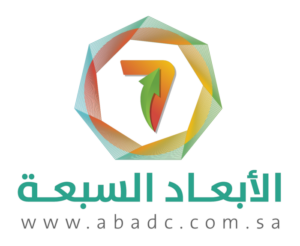learning difficulties
the definition
Learning difficulties are a disorder in one or more of the basic processes that include understanding or using language, spoken or written, and which may appear in the child’s incomplete ability in several aspects such as (reading – writing – arithmetic – thinking (perception) – listening – understanding and using language). .
Examples of learning disabilities include:
Dyslexia: refers to difficulties in reading
Dysgraphia: refers to difficulties in writing
Dyscalculia: refers to difficulties in arithmetic
Difficulties and challenges vary from person to person and one person may suffer from some challenges and other people may suffer from a combination of challenges together.
the date
1930-1960 : Brain research has become the foundation of the field of learning disabilities, Alfred Strauss and Laura Lyhtinen used terms such as traumatic brain injury.
The term changed from brain-injured child to minimally brain-impaired, Then to the term learning difficulties.
1960: One of the first public school programs for learning disabilities was established at Syracuse University in New York by Dr. William.
1963 : The term learning disability was first agreed upon when a small group of parents and teachers met at Palmer House in Chicago. The term was proposed by Dr. Samuel Kirk, Known as the father of learning difficulties.
The meeting resulted in the establishment of the Association for Children with Learning Difficulties, Today it is known as the Learning Disabilities Association of America (LDA).
1973 : The Rehabilitation Act was passed in 1973, It is a landmark civil rights law, Article 504, which prohibits discrimination on the basis of disability, includes: and ensuring that students with disabilities receive a free and appropriate public education (FAPE).
1975: The Learning Disabilities Association of America (LDA) called for specific learning disabilities to be included as a category of disabilities in a draft signed into law.
It established the Education for All Children with Disabilities Act (EHA), Also known as Public Law 94-142. Which eventually became the Individuals with Disabilities Education Act (IDEA).
1990: The Education for All Children with Disabilities Act (EHA) was officially reauthorized and the name was changed to the Individuals with Disabilities Education Act (IDEA).
1997 : The Individuals with Disabilities Education Act (IDEA) was reauthorized, It included adding a requirement that the general education teacher be part of the individualized program (IEP), Also The Learning Disabilities Association of America (LDA) has worked hard to ensure that all students have the right to go to school.
2001: The NO Child Left Behind Act (NCLB) was passed
2002: The American Learning Disabilities Association began (LDA) Healthy Children Project (HCP), With a focus on preventing the causes that can result in learning difficulties, including exposure to chemicals that harm brain health.
2004: The Individuals with Disabilities Education Act (IDEA) was reauthorized and included the addition of Response to Intervention (RTI) which can be used at early stages to identify students with learning disabilities.
2006 : The final publication of regulations accompanying the Individuals with Disabilities Education Act (IDEA) has been released. A number of hearings were held across the country and US LDA representatives were at many of those hearings.
2014: The Learning Disabilities Association of America (LDA) helped amend the Americans with Disabilities Act (ADA) to ensure that individuals with identified learning disabilities continue to receive its benefits.
2018 : Title V of the Act was amended to provide youth grants (PROMISE) for tutoring and remedial education services, With a primary focus on reading and mathematics.
the reasons
The main causes of learning difficulties are genetic, nervous or cerebral, comorbid disorders, Environmental factors
Symptoms
Although there are no symptoms for a person suffering from learning difficulties, there are certain signs, most of which are related to performing academic tasks at school, such as (reading – writing – mathematics – listening – speaking – logical thinking).
It is possible that not all children will show all of the above manifestations and one child may only have one of them.
Studies have shown that when a child suffers from learning difficulties, he shows some symptoms, including:
1- Difficulty distinguishing between right and left.
2- Difficulty identifying items and sorting them according to size or shape.
3- Difficulty understanding and following commands, Difficulty staying organized.
4- Difficulty remembering what was said or what was just read.
5- Difficulty performing hand tasks such as writing, cutting, copying, and drawing.
6- He may have difficulty learning the alphabet, spelling words, or associating letters with their sounds
7- He may make many mistakes when reading out loud. Or he repeats some words, Or stop frequently while reading.
8- He may not understand what he reads.
9- He may not be able to hold a pen correctly and his handwriting is very messy.
10- He may find it difficult and challenging to express his thoughts in writing.
11- He may have difficulty distinguishing the difference between words.
12- Having difficulty understanding comic stories and sarcasm.
13- He may find it difficult to organize what he wants to say. He may be unable to think of the words he needs to write.
14- He may confuse symbols for mathematical operations such as addition, multiplication, and similar numbers.
15- He may be unable to tell a story in order (what happened first, secondly , finally) .
16- He may not know where the task begins and how it continues.
treatment
There is no cure for learning difficulties, but children and people with learning difficulties can be high achievers. They can be taught ways to overcome the difficulties they experience.
Children with learning difficulties often need help, And access to special educational services for them.
Evaluations specified by the Individuals with Disabilities Education Act (IDEA) must be performed to determine if the child needs intervention and assistance.
